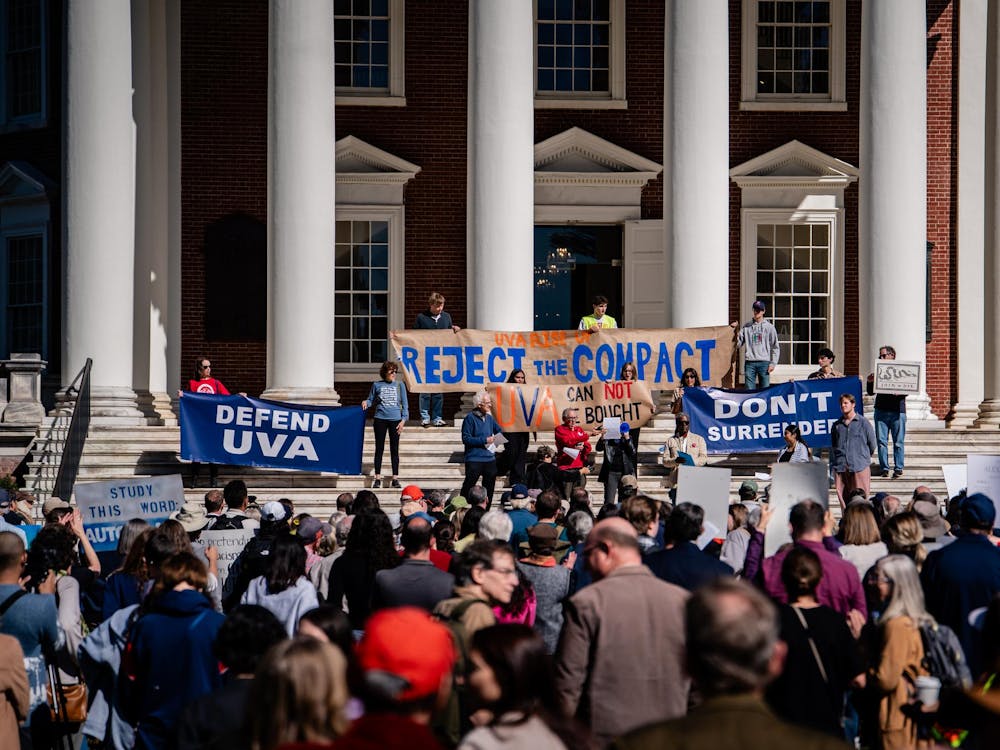ONE OF the greatest benefits of attending a large university is the diversity of clubs and organizations, as well as the relative ease of creating new ones. However, our own University has begun a disturbing trend this year towards significantly cutting CIO funding. Extracurricular activities are a good investment for the University since the cost of funding the clubs is more than recompensed by the number of students who are attracted by the greater diversity of CIOs on Grounds. Student Council and the University need to find ways to increase funding for CIOs; even if it means cutting funding for other organizations such as mainstream sports or implementing a bigger yearly student activity cost for students, such efforts would be worthwhile in terms of attracting applicants.
CIOs are currently dealing with troubled times. For example, SDC Investment club, a CIO formed last year in order to promote education on stocks and options, was planning a recent trip to New York to learn about the trading floor until their plans were financially interrupted. The club fully laid out funding plans for total funding next semester, as well as paying for gas and hotel expenses for the trip -- a total that came to a little over $350. After being interviewed by the CIO appropriations board, the club did receive funding -- around $14, barely enough gas money to get out of Charlottesville. Greatly disappointed with the results, SDC president Christopher Grosvenor felt that was little reason to even go to the appropriations board in the first place.
Unfortunately, this recent trend is far from unique for all CIOs around Grounds. Overall, funding for the three main categories for individual CIOs -- operational, activity and traveling fund requests -- will experience cuts next year along 34.56 percent, 36.67 percent and 60.63 percent respectively. While CIOs have tripled over the past 10 years, funding has been unable to increase proportionately. In an interview with Appropriations Committee Co-Chair Michael Love, currently only $400,000 was awarded to CIOs by the committee from a total of $2 million in requests. Love also mentioned that many of the smaller CIOs need funding in order to increase their general base and expand into a better organization -- however, smaller CIOs will have much more difficulty expanding with CIO appropriation cuts.
In the wake of these cuts, the University does have the ability to show its mettle and intervene on behalf of CIOs. The best way would be to increase funds through a relatively insignificant increase in yearly student activity fees. The University is well-funded, and the financial costs of improving CIO coverage would be small. On average, the Student Council Appropriations Committee receives $600,000 for distribution between the 288 groups asking for money. At the same time, the University Board of Vistors planned on Saturday to increase tuition rates by $665 for in-state students and $1,845 for out-of-state students, mostly for increases in competitive salaries for employees and unavoidable costs. Comparably, in a simple scenario with around 14,000 students in the University, an increase of around $40 in student activity fees each year would nearly double the purchasing power for CIO funding requests. While such an increase solely for funding CIOs is unrealistic, a small increase of $10 in student fees would provide the CIO Appropriations Committee with enough money to significantly diminish budget cuts to funding CIOs. The University would easily still be able to both increase funding and maintain their reputation as a one of the best bargain colleges in the country.
There are also other ways that the Board of Visitors would be able to provide student activities with a better budget for CIO appropriations. The University could streamline the mainstream sports teams' budgets and reevaluate the costs in their programs, such as coachs' salaries and benefits to players. While the University's athletics do generate revenue, there are still many unnecessary costs, such as gratuitously hefty salaries that could be diverted to student activities that could include non-varsity sports.
All CIOs, especially new clubs, need more than just dues to develop a presence at the University. It's time for enough funding for clubs so that CIOs receive at least enough funding to make applying for funds worth it. While no CIO would be able to receive total funding, the University must make sure that all clubs, especially new CIOs that need funding the most, are able to at least see some relatively significant amount to let their organizations grow. The University has the ability to make sure CIOs receive better funding while making negligible changes in the overall student activity fees and reevaluations. If nothing else, at least let the appropriations board provide enough gas money to get out of Charlottesville.
Adam Silverberg's column appears Thursdays in The Cavalier Daily. He can be reached at asilverberg@cavalierdaily.com.






